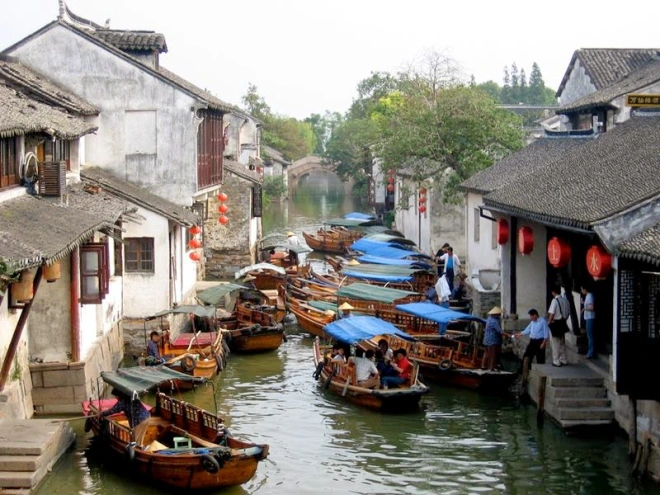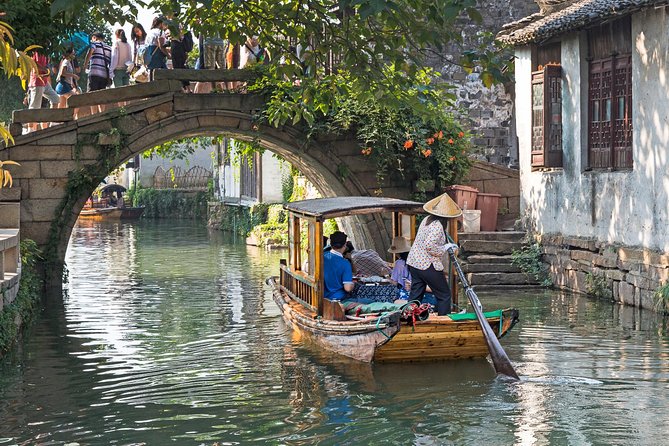Yangtse River Cruise - 2002
- Jul 16, 2024
- 6 min read
Updated: Mar 14

A few words about the Yangtze river -
The name Yangtze has been applied to the river mainly by those in the West. Chang Jiang (“Long River”) is the name used in China.
The Yangtze is the most important river of China. It is the country’s principal waterway, and its basin is China’s great granary and contains nearly one-third of the national population.
It is the third longest river in the world, with a length of 3,915 miles (6,300 km).
From its source on the Plateau of Tibet to its mouth on the East China Sea, the river traverses or serves as the border between 10 provinces or regions. More than three-fourths of the river’s course runs through mountains.


A Yangtze River cruise offers an unforgettable experience to explore one of China’s most iconic river. Our cruise line was named Presidential cruises. Our itinerary consisted of 4 days, ‘ The Three Gorges ” tour from Chongqing to Yichang. This is the most popular route, typically lasting 4-5 days, focusing on the Three Gorges and the dam.
As I wrote earlier in my Guilin post, our flight from Guilin to Chongqing was delayed – we arrived late at Chongqing. The ship was waiting for us and went directly taken from the airport to the port to board our ship “ YANGTZE Angel “ . To enter the ship we had to walk down several steps to reach the ship. Along with our baggage the staff held our hands and we quickly entered ship. Fortunately our cabin was at the same level.
Since we boarded at night, the real feel of being in a big cruise ship was felt only when we woke up next morning. On waking up we realised that our cabin was almost at the level of river’s surface. Dining hall was right across from our cabin. This arrangement suited us. In the dining room tables were already allotted. On our table all of us were English speaking foreigners . An American couple was travelling with a young Chinese who was working in their firm. Having him was a big advantage as he could describe everything in detail in English.
In the morning after breakfast we were invited to gather on the open deck . A young gentleman was waiting for us to fly a kite as the ship was getting ready to take off. He greeted the crowd saying "nin hao"- meaning welcome.
Our journey by boat was from Chongqing to Yichang.
As the Yangtze flows through eastern Sichuan and into western Hubei, it traverses for a distance of 125 miles (200 km) through the famous Three Gorges region before entering onto the plains to the east.
The gorges have steep, sheer slopes composed mainly of thick limestone rocks. Prior to the completion of the Three Gorges Dam in 2006, they rose some 1,300 to 2,000 feet (400 to 600 metres) above the river, although with the creation of the reservoir behind the dam their height has been diminished fairly significantly. Nonetheless, they still present the appearance of fantastic towers, pillars, or spears.

Our first stop was Fengdu
Fengdu Ghost City: It originates back to the Han Dynasty.
It is located North of the Yangtze River, on Ming Mountain in the province of Chongqing . This city is one large collection of temples, memorials and monasteries. And they are all about life after death.
It is cultural site with temples and statues that depict the afterlife, providing insights into traditional Chinese beliefs about the spiritual world.
Since Tang Dynasty, forty-eight temples have been built in this place, such as the “Hall of the Jade Emperor”, ” the “Palace of Hell”, “Boundary Between the Living and the Dead”, ” the “Ridge of Helplessness” and the “Balcony of Nostalgia”.

Next we reached the part of river where the three Gorges are located .
Three Gorges: The Yangtze River's gorges were already deep before the dam was built, with depths of 500–600 feet (150–180 meters). This made the Yangtze one of the world's deepest river. The gorges are rocky, and the walls are speckled .

Qutang Gorge: The first gorge is the shortest (8 km ) but most dramatic gorge, known for its towering cliffs and narrow passageways.

Wu Gorge: Famous for its serene beauty, with deep valleys and lush forested mountains.The second gorge, stretches for about 30 miles (50 km); it is a narrow, steep corridor with almost vertical walls of heights up to 1,600 or even 2,000 feet above the river.

The last gorge, Xiling Gorge: The longest of the three, featuring numerous rapids and rock formations. extends for a distance of 21 miles; in places limestone cliffs rise directly out of the water,
Three Gorges Dam: The world’s largest hydroelectric project. Tours often include a visit to the dam and its impressive ship locks.

Shennong Stream: A tributary of the Yangtze, offering excursions on smaller boats to see the beautiful scenery and traditional hanging coffins. We didn't see any coffins, but our journey was exactly as depicted. in this photo.

Lesser Three Gorges:
The Lesser Three Gorges involve three green valley regions connected to the Daning River, to include the Dicui Gorge, which translates to Emerald, the Misty Gorge, and the Dragon Gate Gorge. Nestled on the lower portion of the River, these three gorges consist of dense forest that is surrounded by steep mountains and cliffs.


Water towns / Canal towns in China
Last we visited what is known as Water Cities in China - Zhouzhuang. There are several of these.
Water Towns, also called Canal Towns , are certain ancient and historic towns in China known for their bridges, rivers, and canals. They are located towards the south of the Yangtze River. The distribution of residential buildings in these water towns can be categorised into three types: against the water, by the water, and across the water. These river-based settlements are widely advertised as tourism destinations because of their historical and cultural representations of China. The idyllic small-town setting, which demonstrates the harmonious relationship between nature and its residents, is also another attractive factor.
Zhouzhuang -
Zhouzhuang, often called the "Venice of the East," is one of the oldest and most well-preserved water towns in China. It is located in Kunshan City, Jiangsu Province, and dates back over 900 years. The town features ancient stone bridges, traditional residential houses, and narrow waterways.
Zhouzhuang is a popular tourist destination, classified as a AAAAA scenic area by the China National Tourism Administration.[3] It is noted for its profound cultural background, well preserved ancient residential houses and elegant watery views.[4] A 2017 article in the Smithsonian Magazine described Zhouzhuang as "the most famous and most commercialized ancient water town in China," in addition to noting that its architecture "dates back more than 900 years, with about 60 original brick archways and 100 original courtyards."[5] It has also been called "Venice of the East".
Zhouzhuang is known as "China's No. 1 Water Town" all over the world. It was selected as one of the "Top Ten Most Beautiful Towns in the World" by CNN in the United States, and won the title of "Global Excellent Ecological Scenic Spot" by the United Nations. The distribution of residential buildings in these water towns can be categorised into three types: against the water, by the water, and across the water. .
Zhouzhuang is surrounded with and divided by lakes and rivers. Many stone bridges cross the rivers, showing distinctive views of the water town. The Double Bridges, which are Shide Bridge and Yongan Bridge, are the most famous and are considered the symbol of Zhouzhuang. Built in the Wanli era (1573–1619) of the Ming dynasty, the Double Bridges are located in the northeast of the town. Shide Bridge is east–west and has a round arch, while Yongan Bridge is north–south and has a square arch. Crossing the two crisscross rivers (Yinzi Creek and Nabeishi River) and connecting at the middle, the Twin Bridges look like an old-style Chinese key.
Also, the Double Bridge is the best place to feel the ancient charm of Zhouzhuang. With the gem-like water and lush trees, you can take a boat to appreciate it and enjoy passing through under the bridge.
In 1984, 38 canvases of the notable painter, Chen Yifei, who is a famous painter were exhibited in a New York gallery of Armand Hammer. And in 1985, the painting was chosen to be the pattern of the first-day cover of the United Nation, favoured by people from all field






Comments